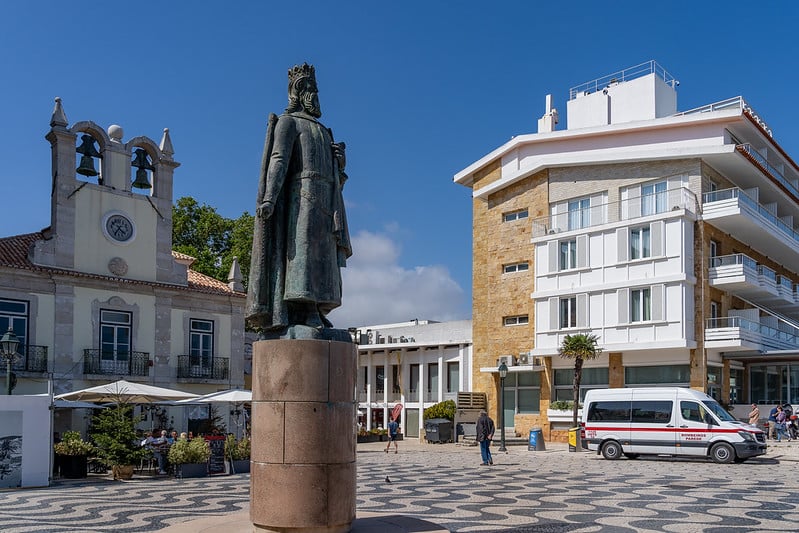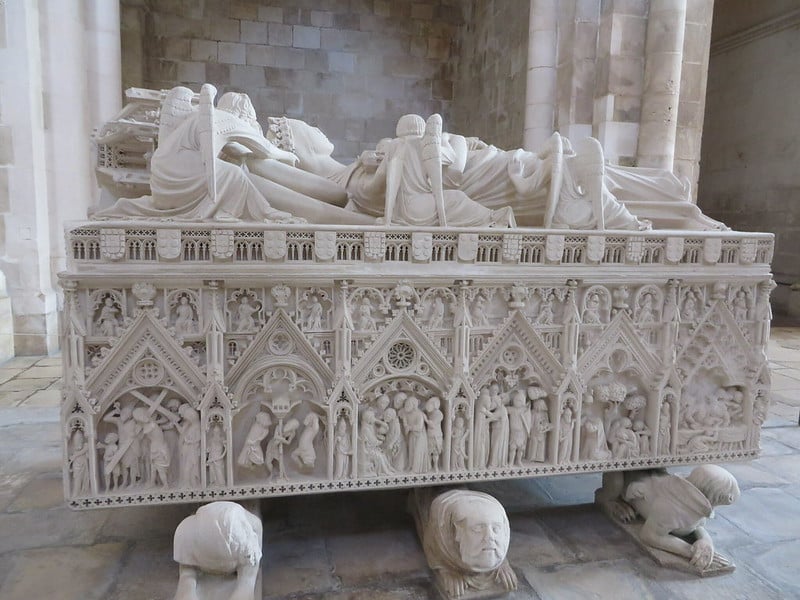In the heart of Portugal’s rich history lies a tale of love, tragedy, and undying devotion that has captivated hearts for centuries. This is the story of Pedro I, the future king of Portugal, and the handmaiden Inês de Castro, often hailed as the most tragic and beautiful love story in Portuguese history.

RH&XL, Flickr
The Dawn of a Forbidden Love
The tale unfolds in the 14th century within the walls of the royal court. Prince Pedro, the heir to the Portuguese throne, was bound by duty to marry D. Constança Manuel, a young noblewoman from the royal family of Castela. This was a union orchestrated for political alliance. The arrival of Constança brought with her a retinue, among which was Inês de Castro, a lady-in-waiting of striking beauty from Galicia. Pedro, young and impassioned, was struck by Inês’s allure, and they soon found themselves entangled in a forbidden romance.
Despite the confines of his marriage, Pedro’s heart belonged irrevocably to Inês. Their secret love blossomed in the shadows of the court thriving through their stolen glances and clandestine meetings. Fate dealt the lovers a lucky card with the untimely death of Constança, who died giving birth to the future king D. Fernando I. Free from his marital bonds, Pedro openly declared his love for Inês and ignited the flames of scandal and opposition within the court and his entire kingdom.
Tragedy Strikes and a King’s Wrath
Tragically, the couple’s union was met with fierce resistance, particularly from Pedro’s father, King Afonso IV. The king, concerned about the potential political implications and the threat to the royal lineage, vehemently opposed their relationship. Despite this, Pedro and Inês continued their life together in Coimbra, welcoming four children into their fold.
The growing influence of Inês’s family and the birth of her children with Pedro intensified the court’s apprehension. Fears of a diluted royal lineage and potential Spanish influence over Portuguese affairs reached a fever pitch. The situation deteriorated rapidly when rumors began to circulate about Pedro and Inês plotting against the young heir, Fernando, further exacerbating the tension.
In a tragic turn of events, succumbing to the pressures of the court and his own fears, King Afonso IV ordered the assassination of Inês in 1355. Her death, carried out in the gardens of Quinta das Lágrimas in Coimbra, was a brutal and heart-wrenching event. Legend has it that Inês’s tears sprouted the Fonte das Lágrimas, where you can still see her blood stained on the rocks.

Pedro, Flickr
The aftermath of Inês’s death saw Pedro consumed by grief and fury. His pain turned to rage against his father and those responsible for his beloved’s death. Upon ascending to the throne, Pedro’s first act was one of retribution. He hunted down and executed Inês’s assassins, ripping out their hearts in the process, a manner befitting his newfound epithet, “Pedro the Cruel.”

A Love Immortalized
In a dramatic and unprecedented gesture, Pedro then posthumously declared Inês as the Queen of Portugal. In a ceremony that has been etched into the annals of history, he is said to have exhumed her body, placing her on the throne and forcing the court to pay homage to her lifeless body by kissing her hand. This act not only solidified his undying love for Inês but also served as a stark message to his detractors.
In a final tribute to their eternal love, Pedro commissioned the construction of two elaborate tombs at the Monastery of Alcobaça. These tombs, masterpieces of Gothic art, were placed facing each other, symbolizing the couple’s enduring love and the hope that they would be reunited in the afterlife. It is said that on the day of the Last Judgment, Pedro and Inês would rise and see each other at first sight.
The story of Pedro and Inês transcends the boundaries of time and space. It has inspired countless works of art, literature, and music, becoming a symbol of eternal love and loyalty. Visitors to Portugal can still trace the footsteps of this legendary couple. The gardens of Quinta das Lágrimas in Coimbra, where their love blossomed and Inês met her tragic fate, and the magnificent tombs at Alcobaça Monastery in Central Portugal still remain as testaments to their love story. It is a timeless narrative that continues to inspire and move hearts across the world, a poignant reminder of the power of love and its enduring mark on history.



